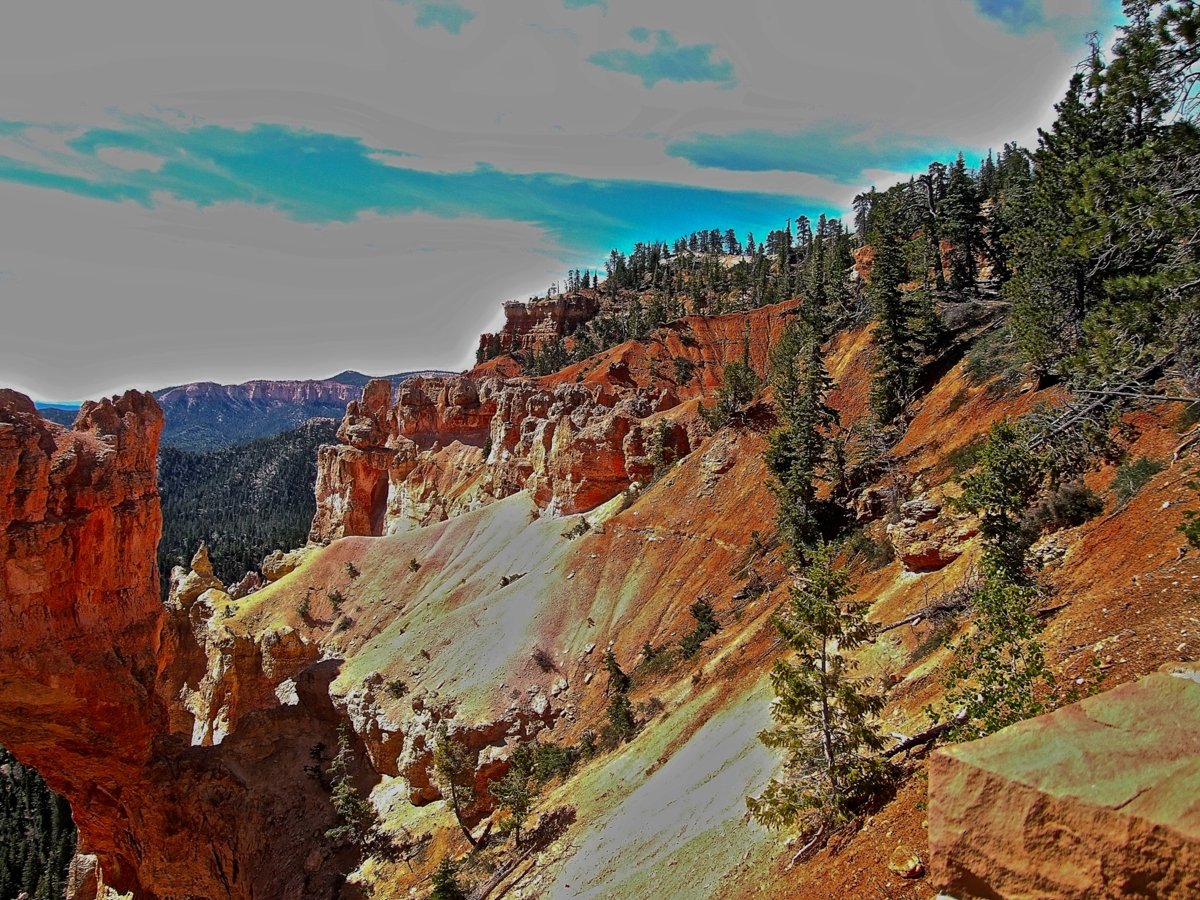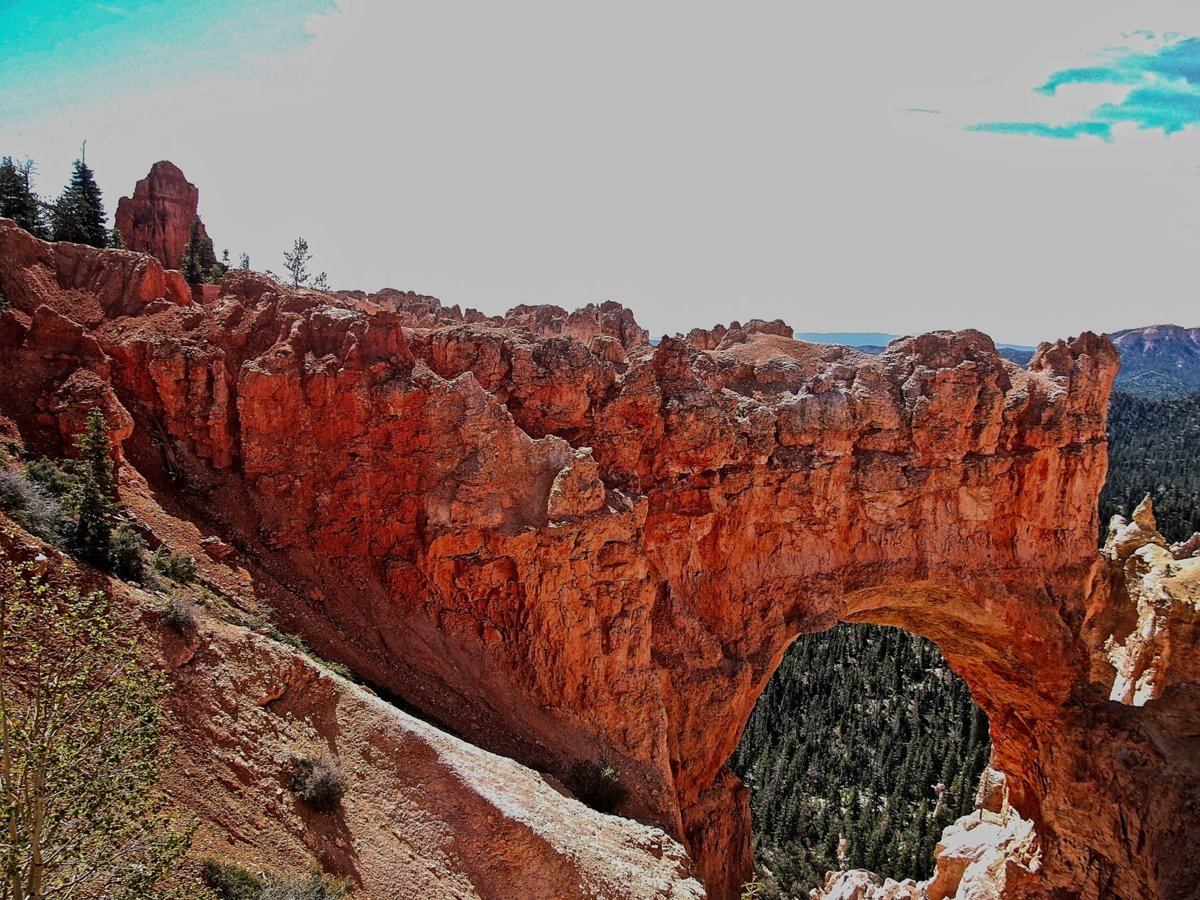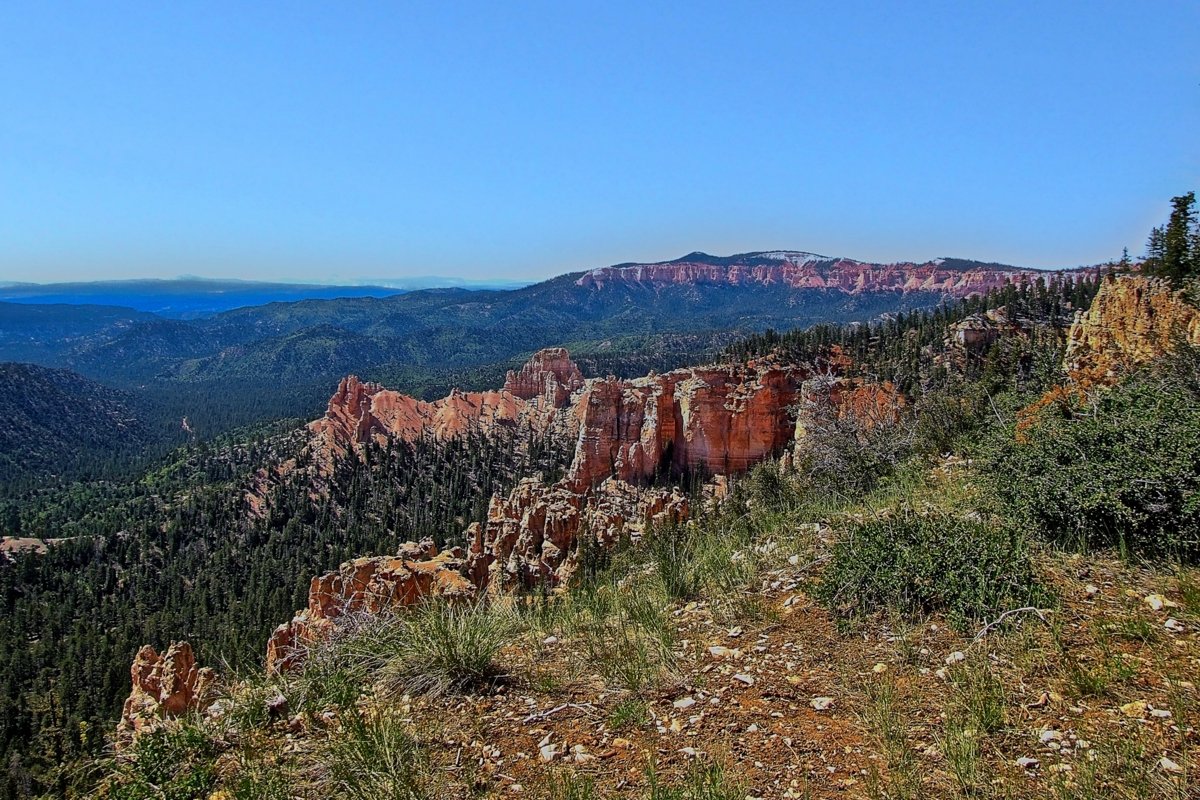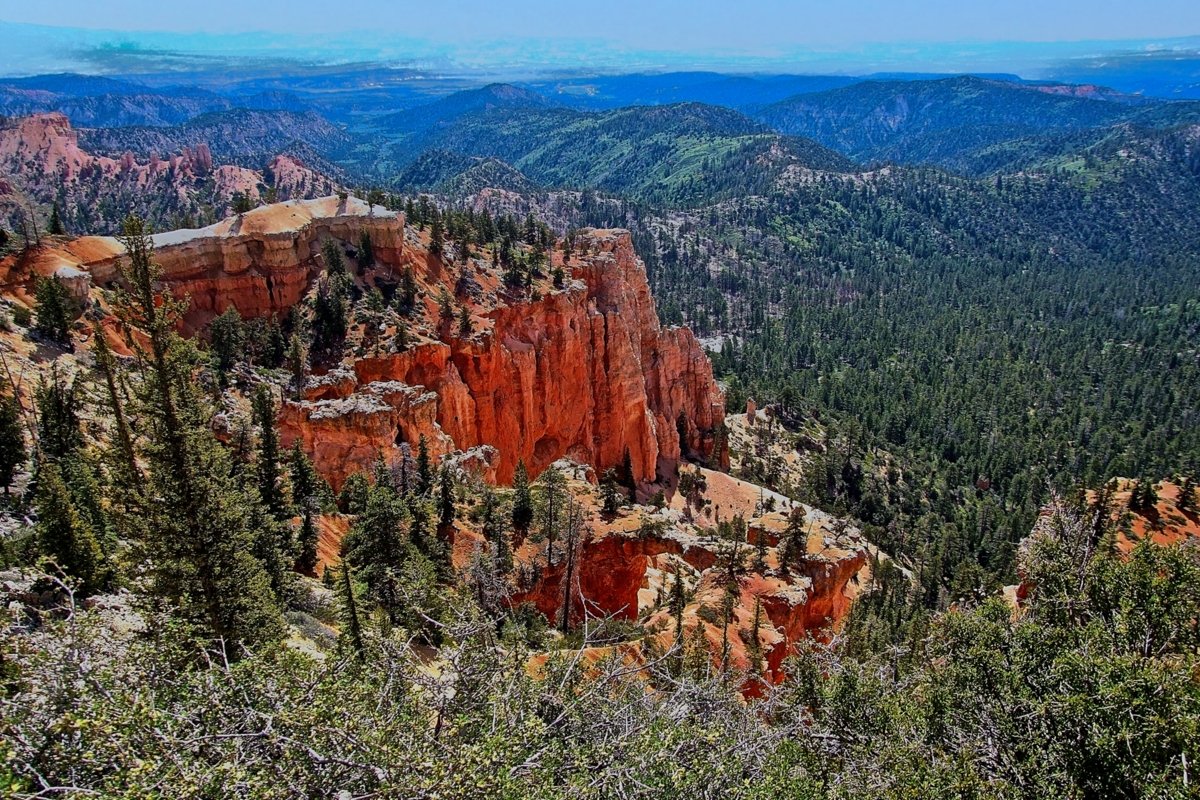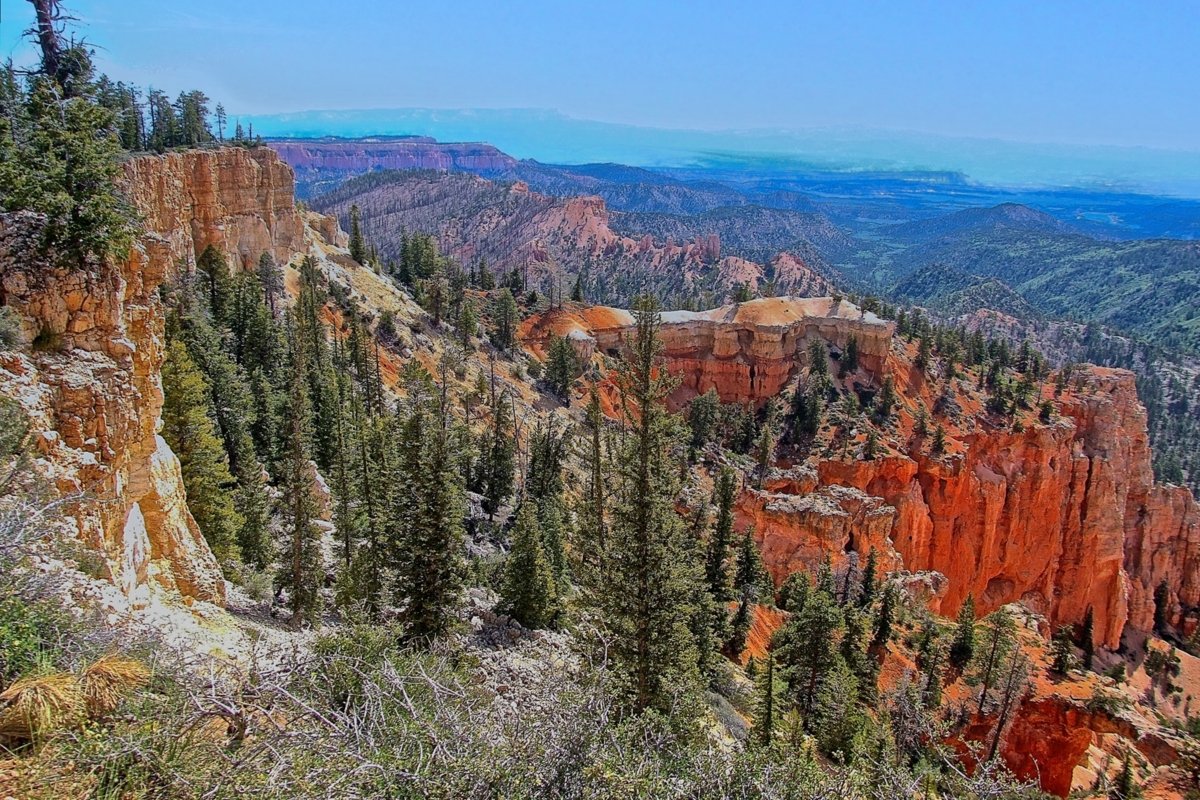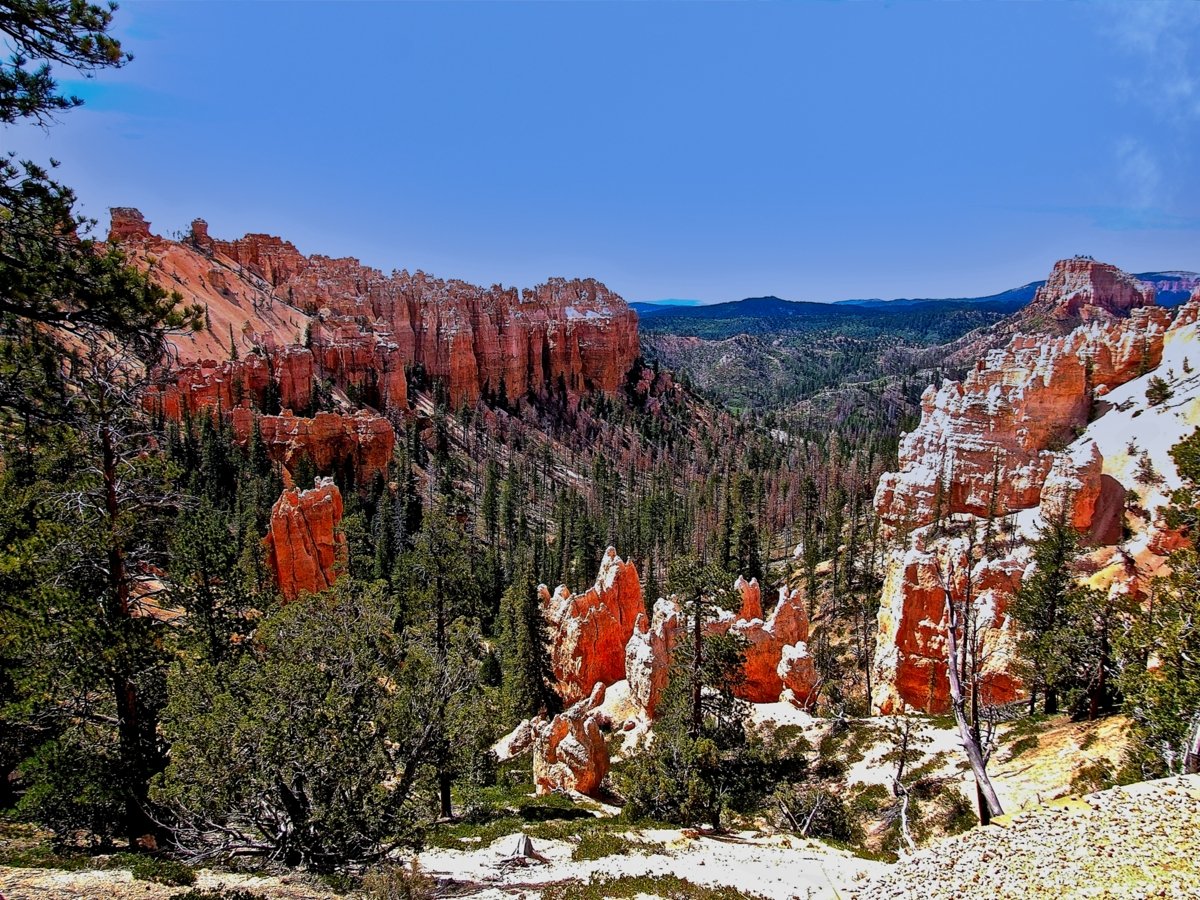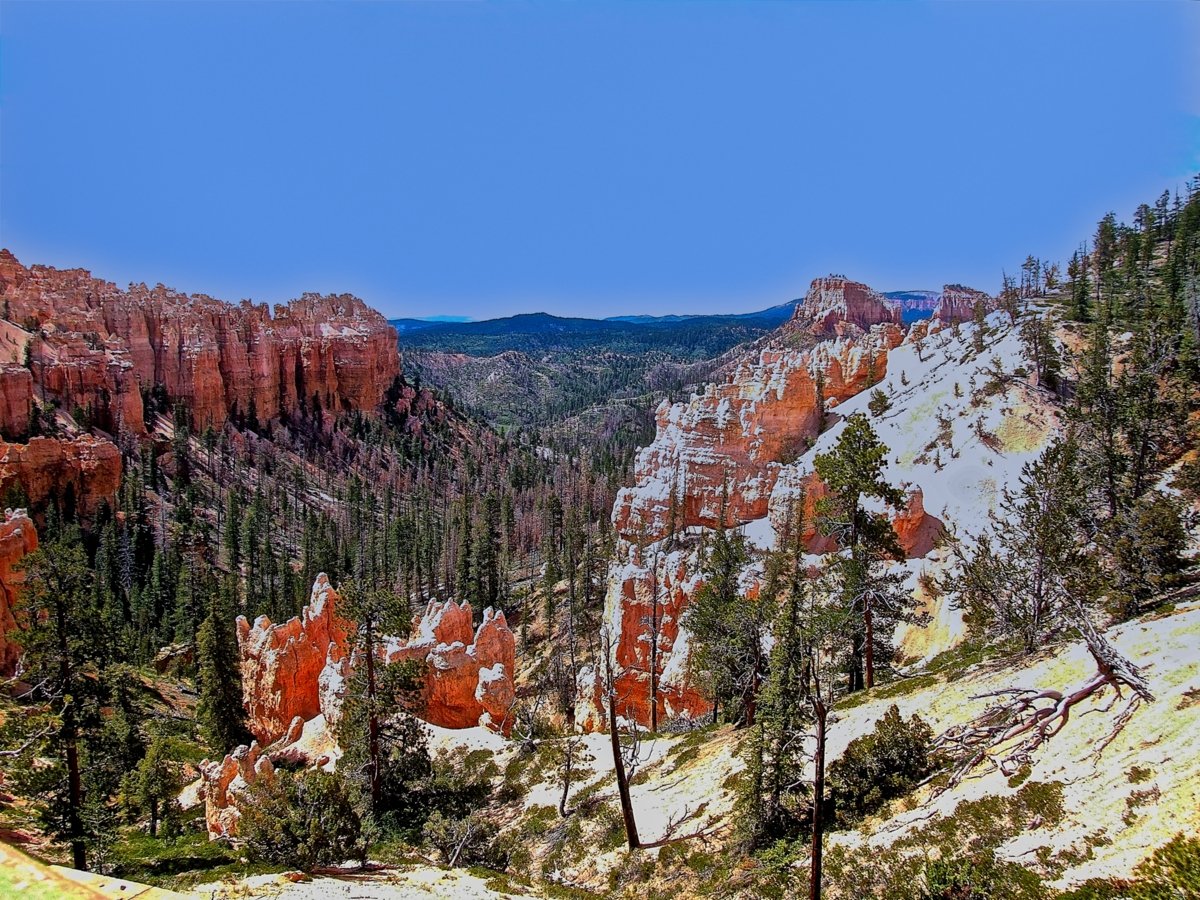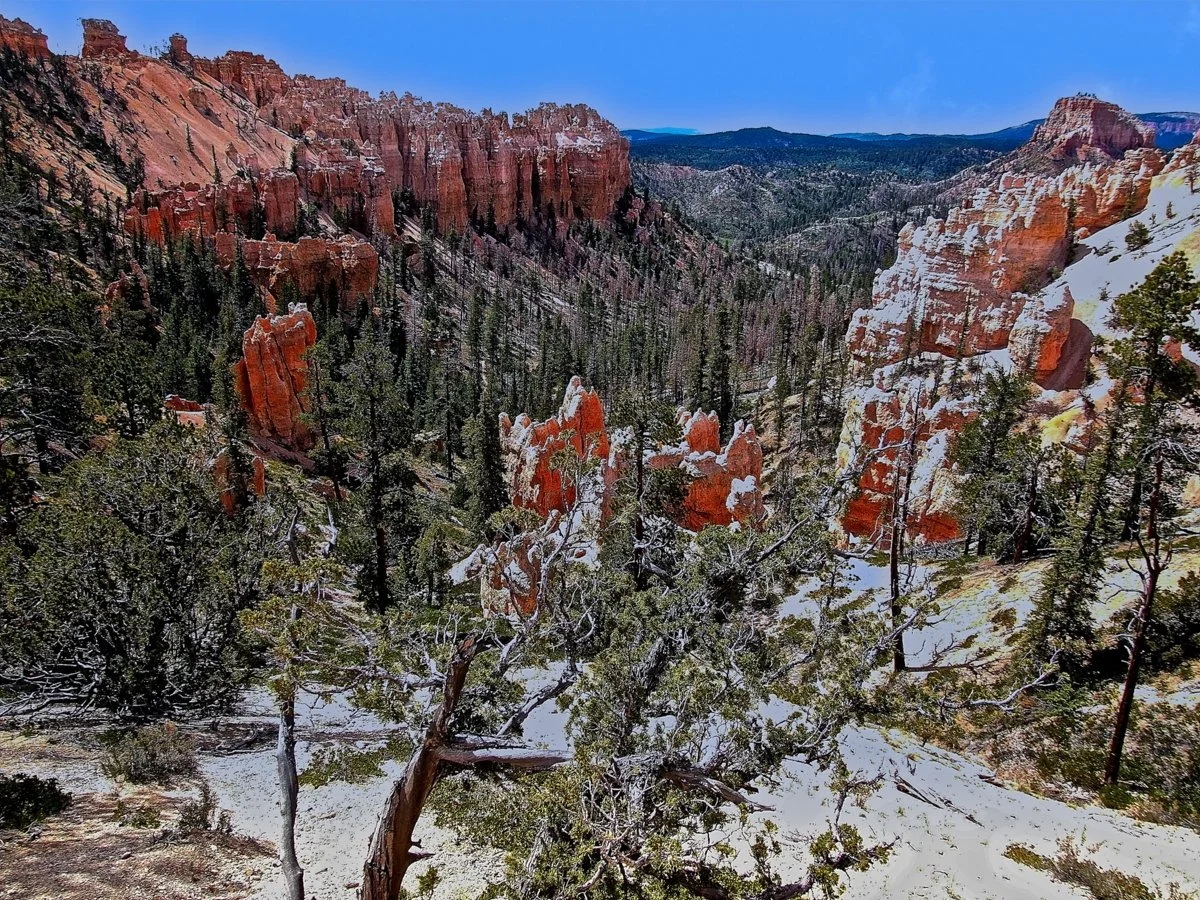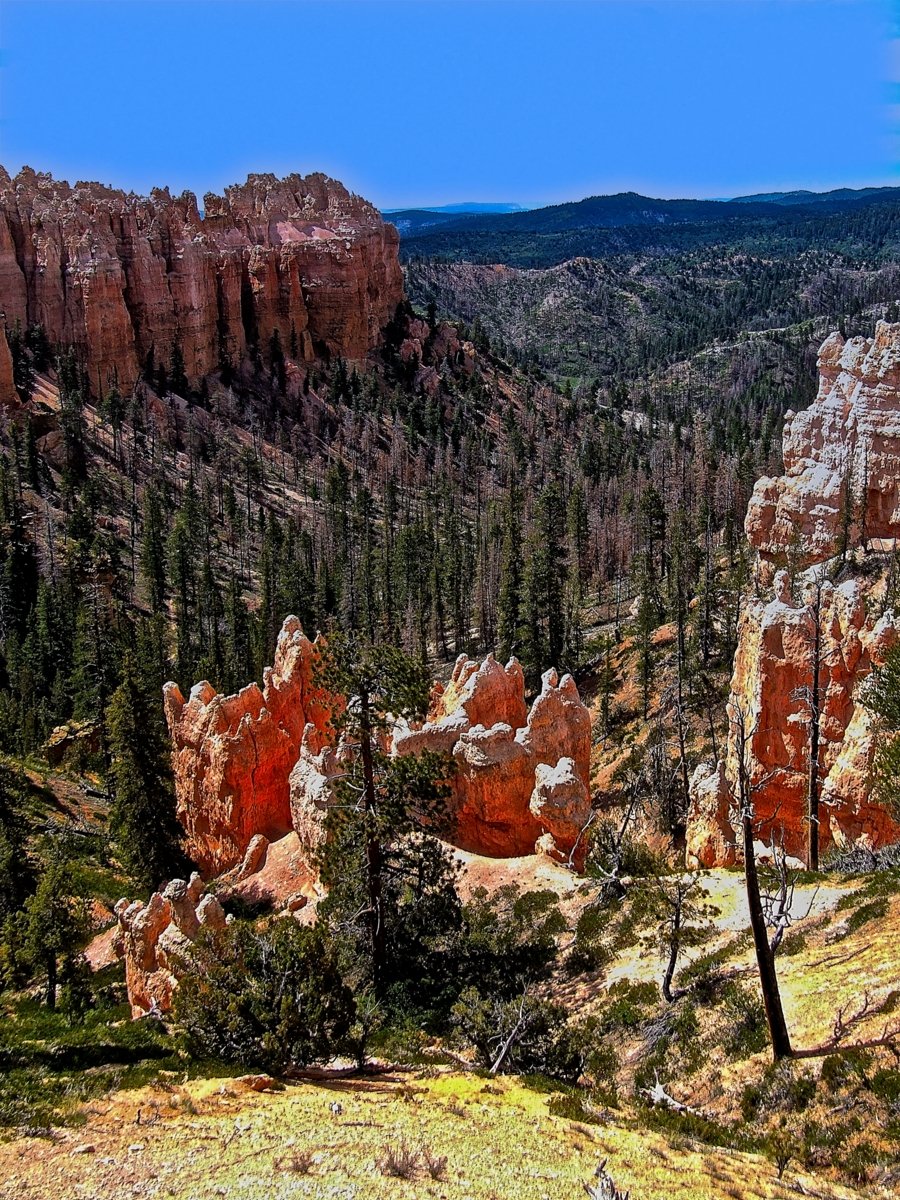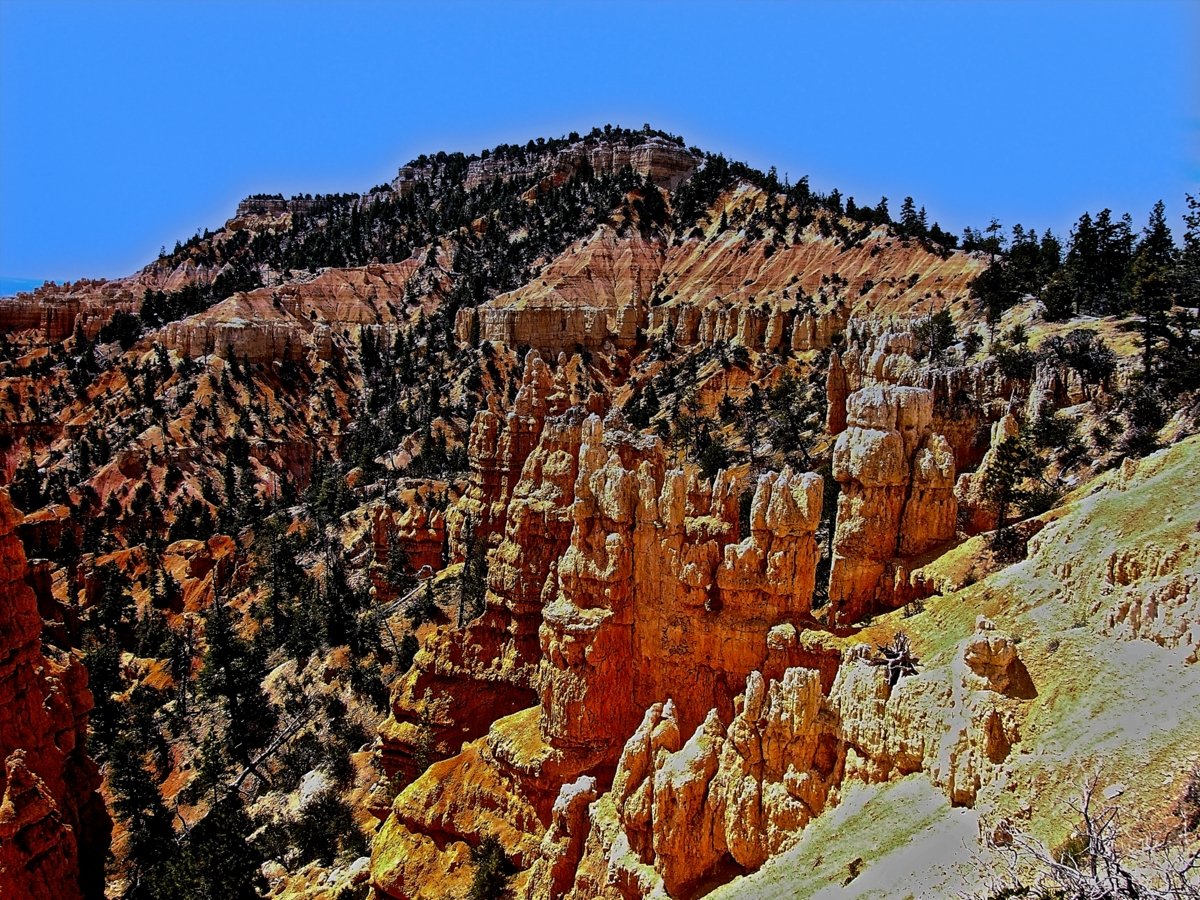
Bryce Canyon National Park
Bryce Canyon National Park, is a sprawling reserve in southern Utah famous for crimson-coloured “hoodoos”, which are spire-shaped rock formations. The park’s main road leads past the expansive Bryce Amphitheater, a hoodoo-filled depression lying below the Rim Trail hiking path. It has overlooks at Sunrise Point, Sunset Point, Inspiration Point and Bryce Point. Prime viewing times are around sunup and sundown.
Visitors at Bryce Canyon National Park come to see the unique shapes formed in the Claron Formation. Bulging spires and narrow rock fins, commonly known as Hoodoos, fan out from the edge of the plateau.
The chaotic destructive force of water, not wind, is responsible for the fantastic shapes in Bryce Canyon. Bryce Canyon Hoodoos formed over thousands of years by the same processes that form the features of surrounding parks. Water, ice and gravity are the forces at work in Bryce Canyon National Park. These three forces coupled with the differential erosion of the Claron Formation produces a different morphology than that of any other area in the world. 10-15 million years ago the Paunsaugunt Plateau was caught and lifted by the Colorado Plateau. Breaks, called joints, formed in the plateau during the uplift. Joints allowed water to flow into the rock and, as water flowed through, erosion widened them into rivulets and gullies. Over time, deep slot canyons formed in the sides of the plateau.

The "Hoodoos" really stand out here in this shot from Paria Viewpoint





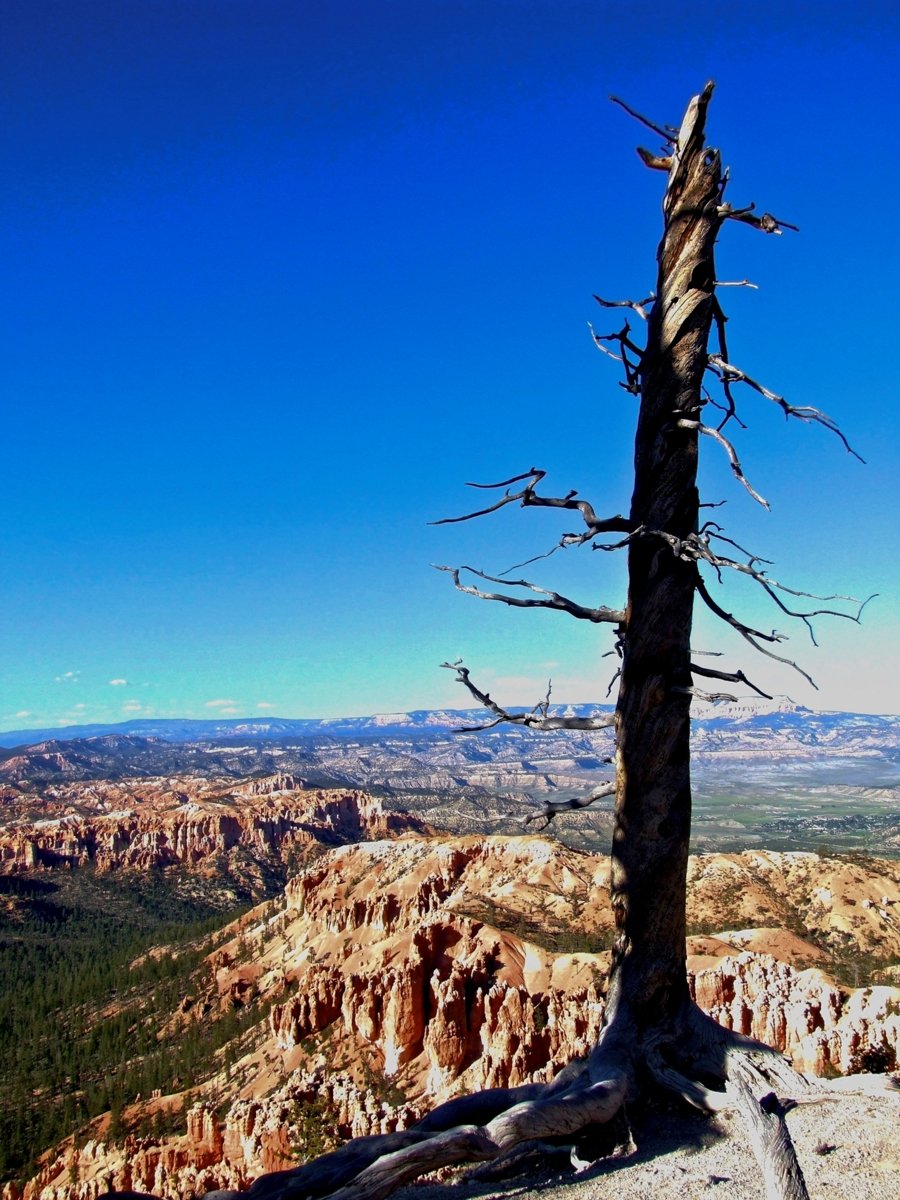
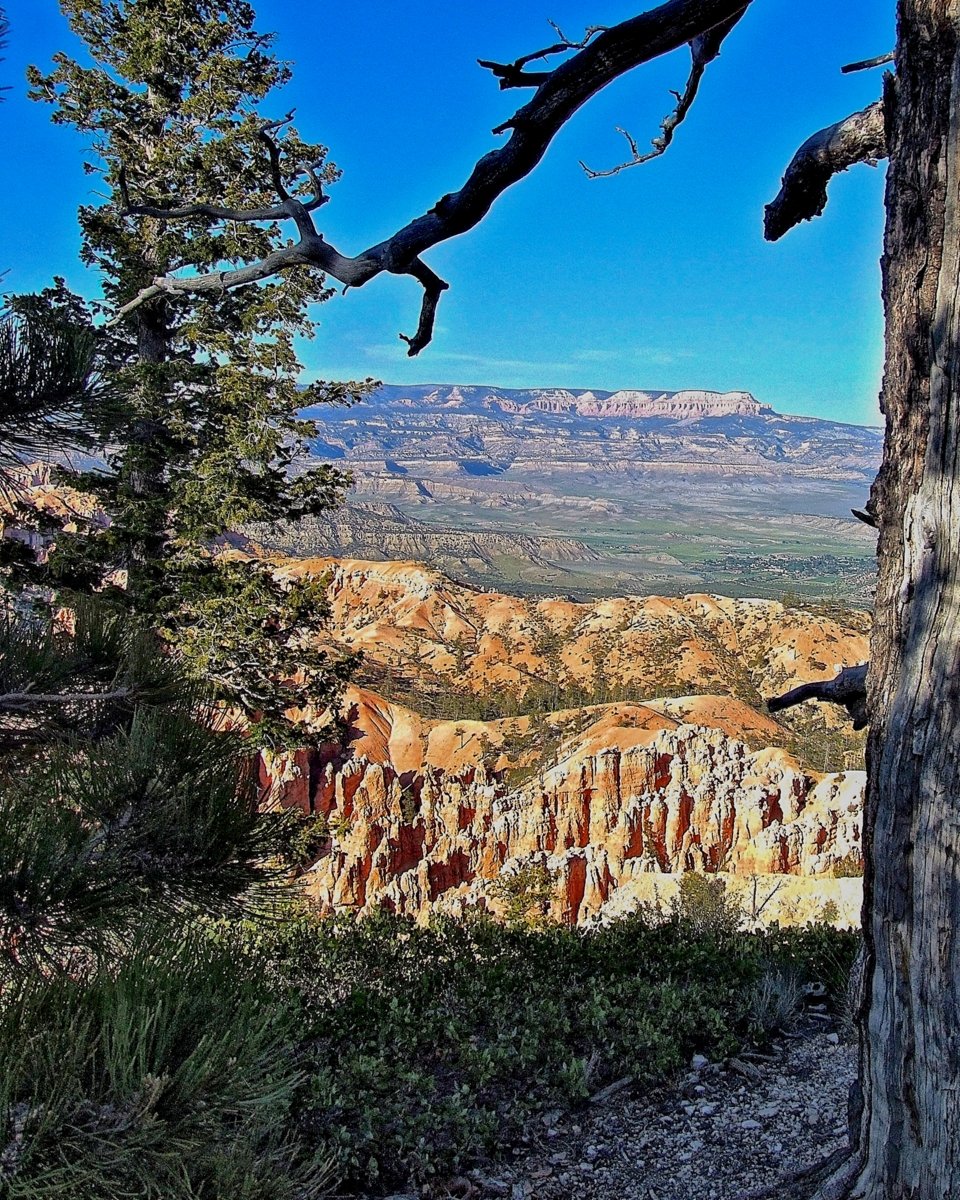

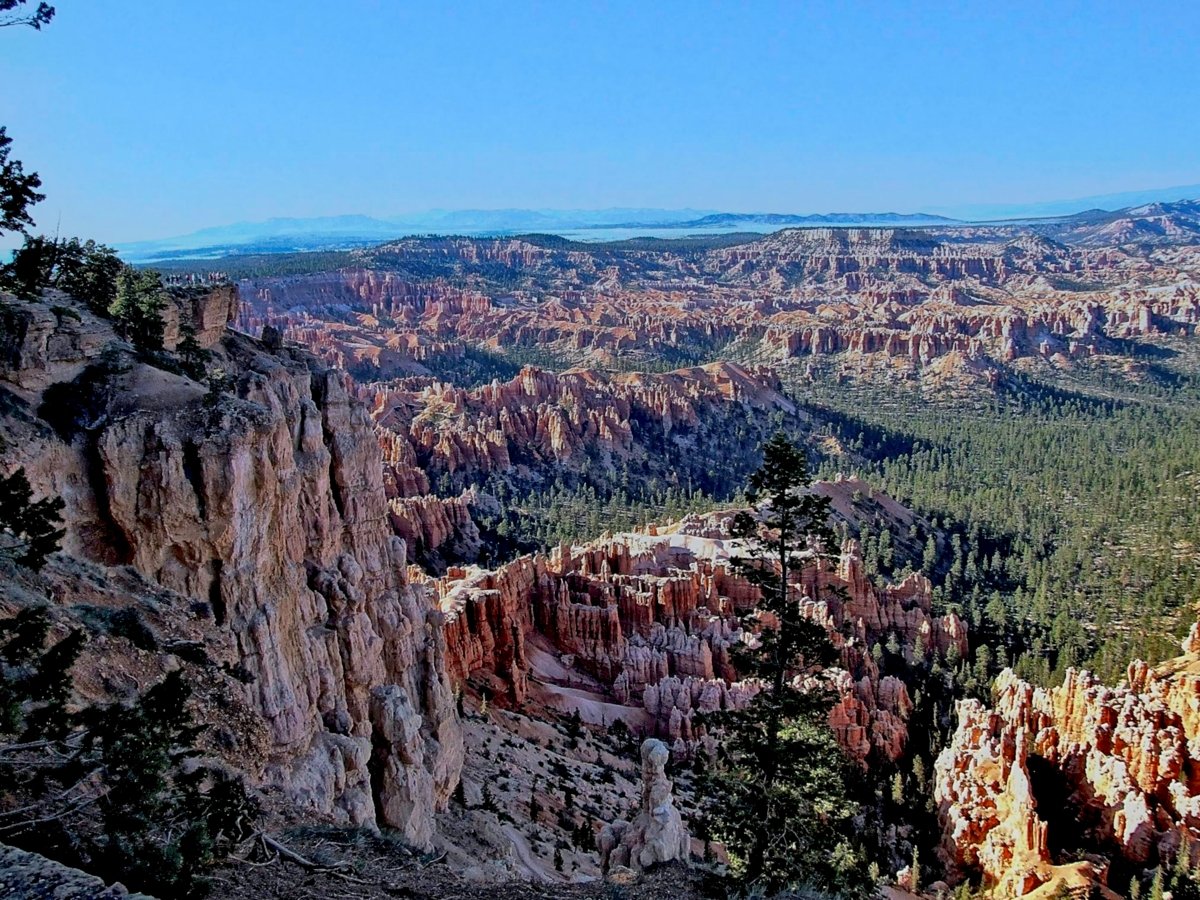
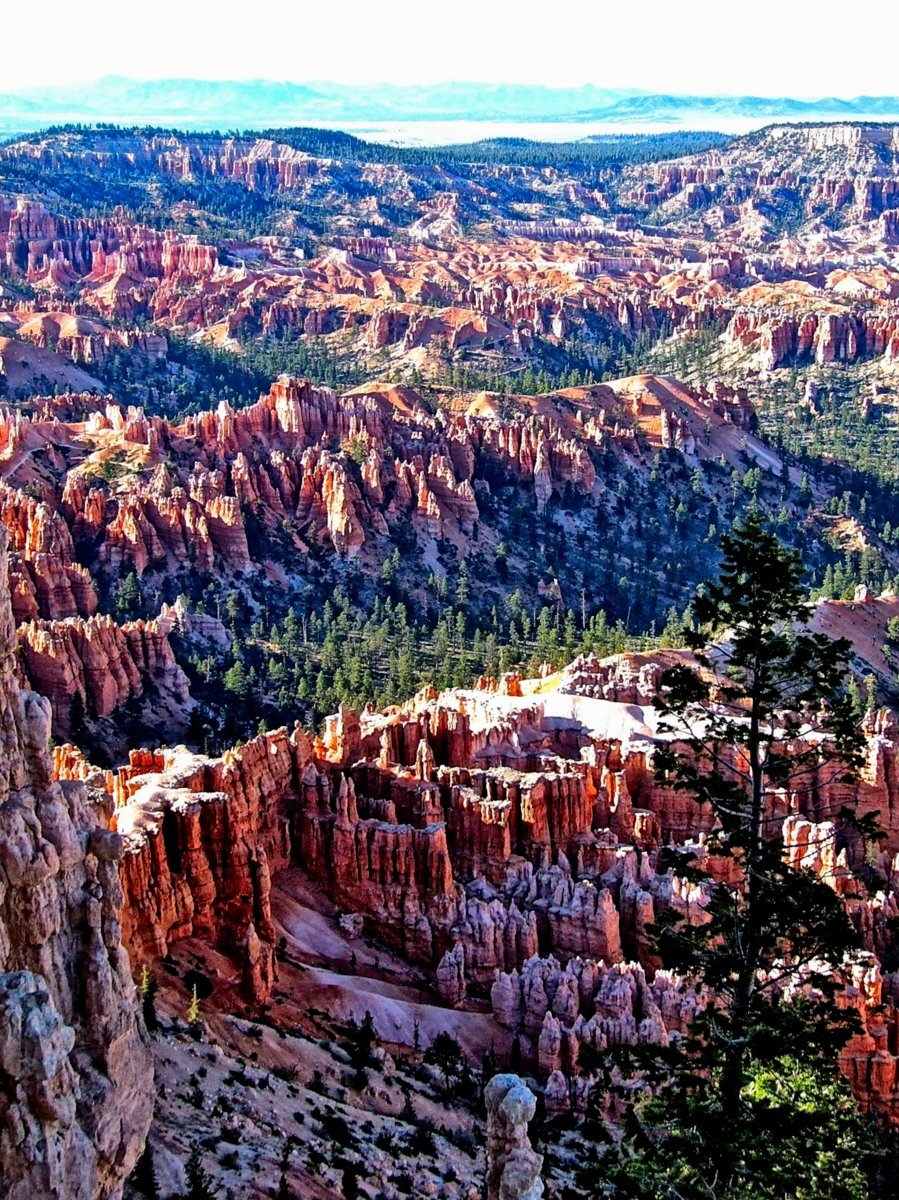
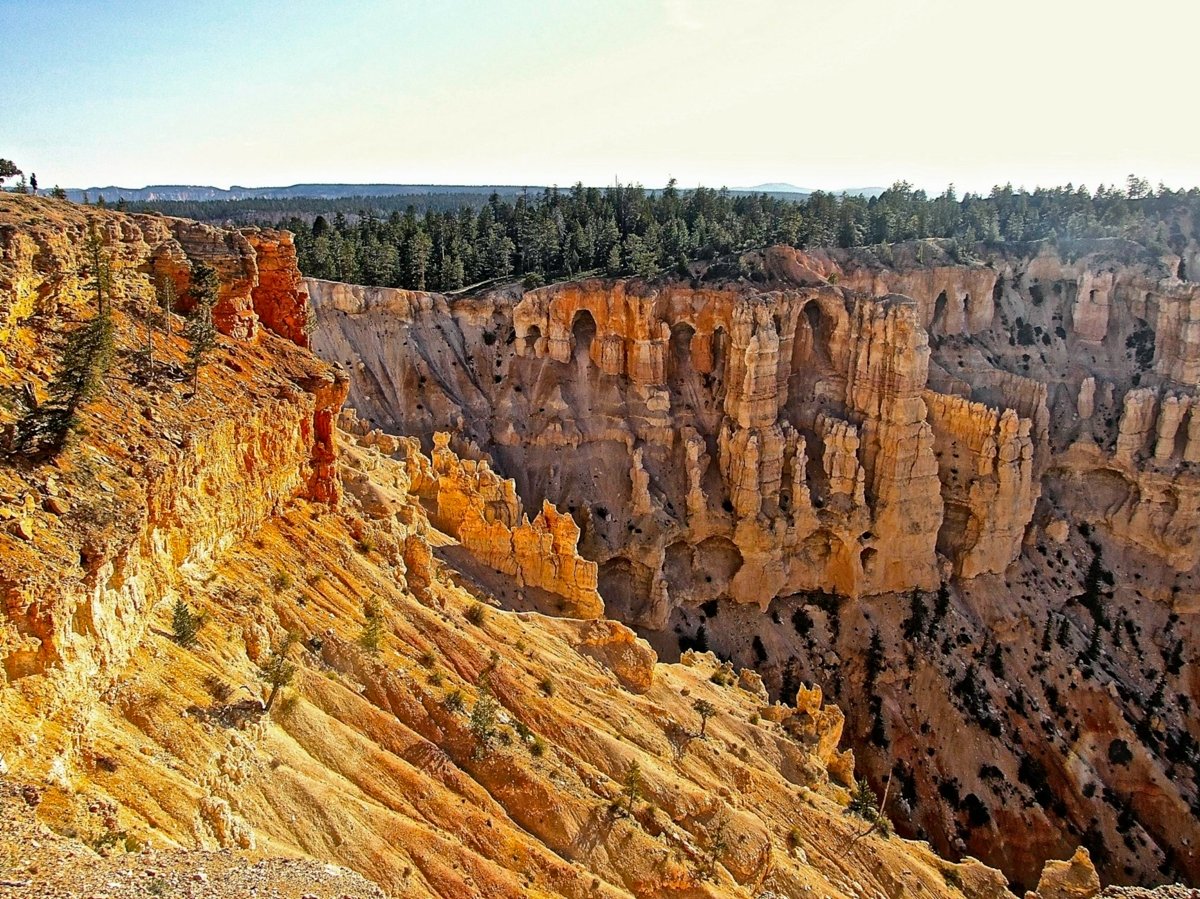
Bryce Point

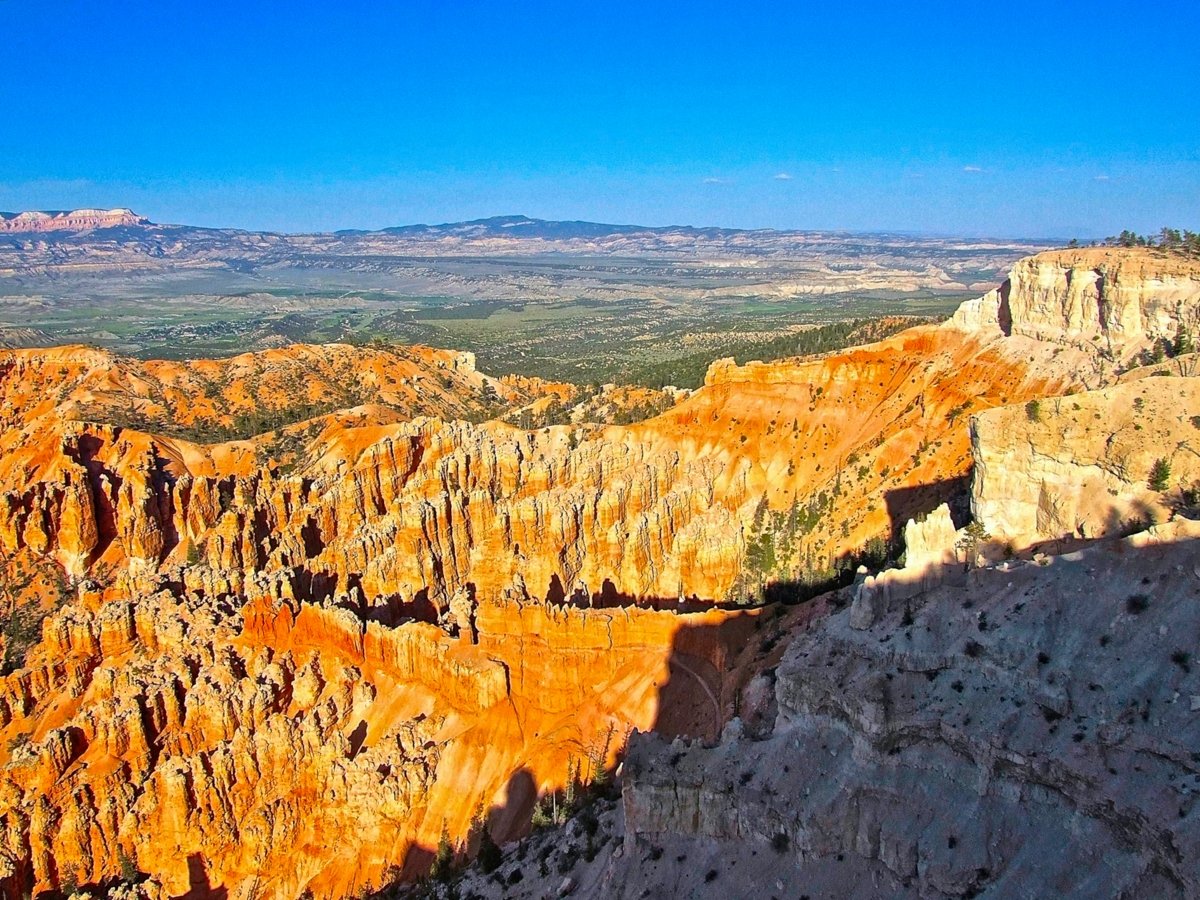
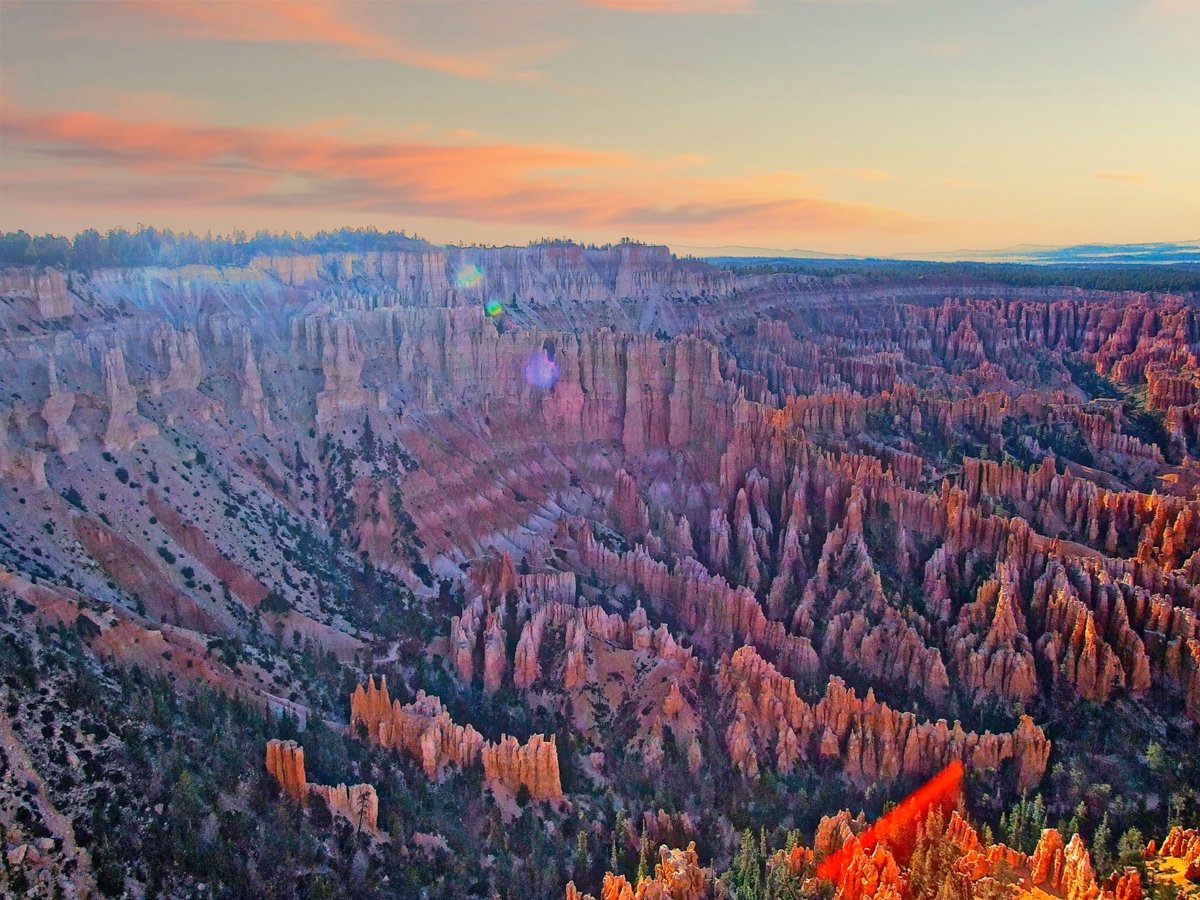
Sunset at Bryce Point

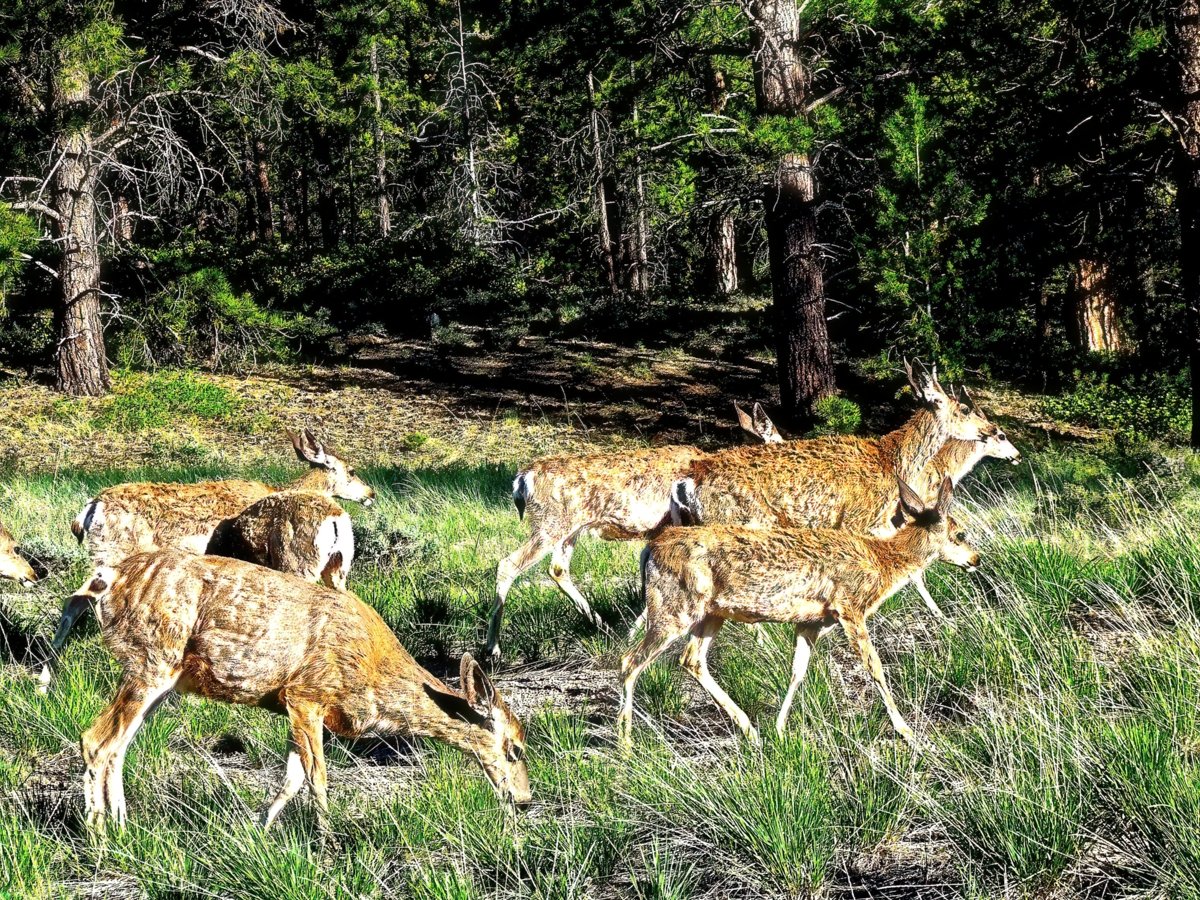
Mule Deer at Bryce Canyon
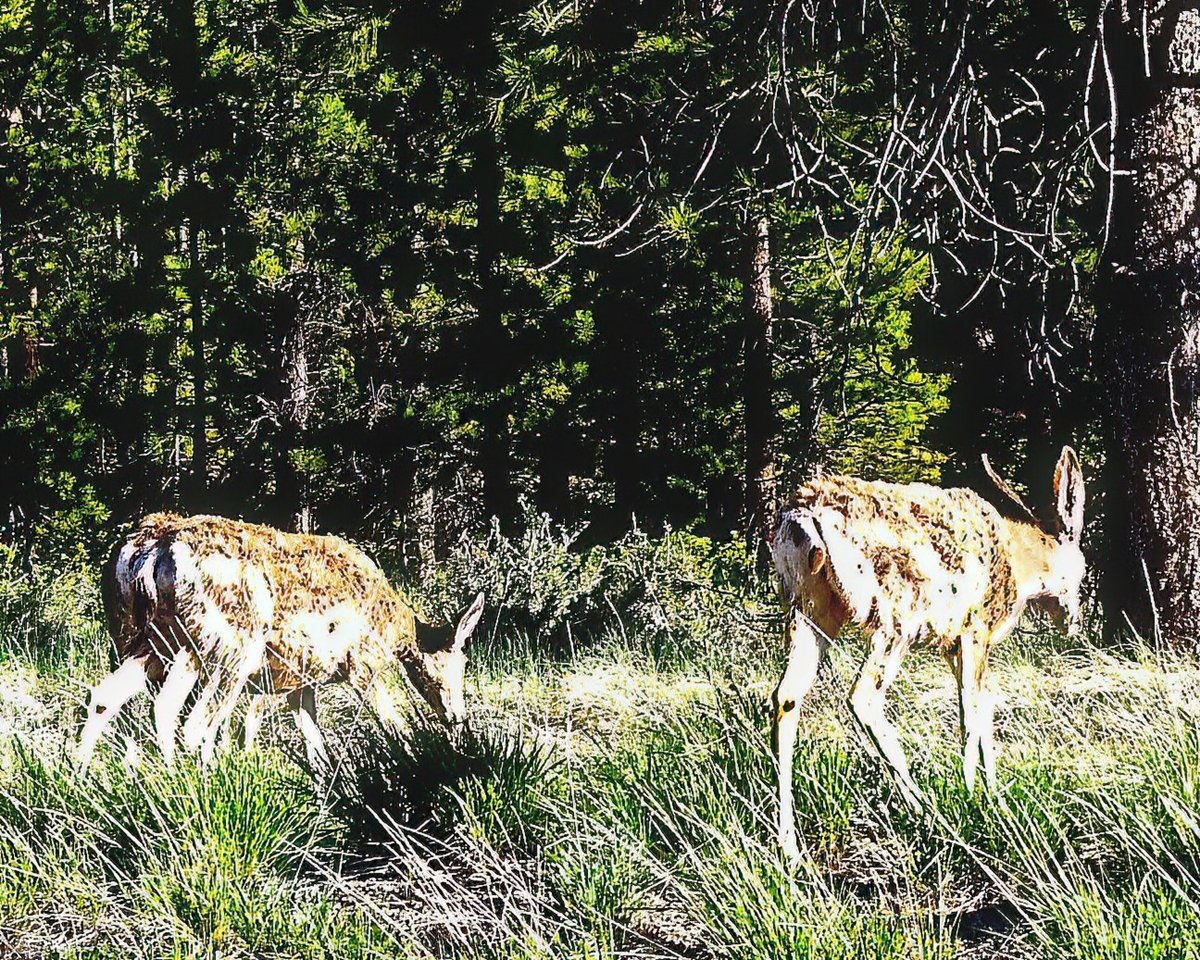
What big ears you have !

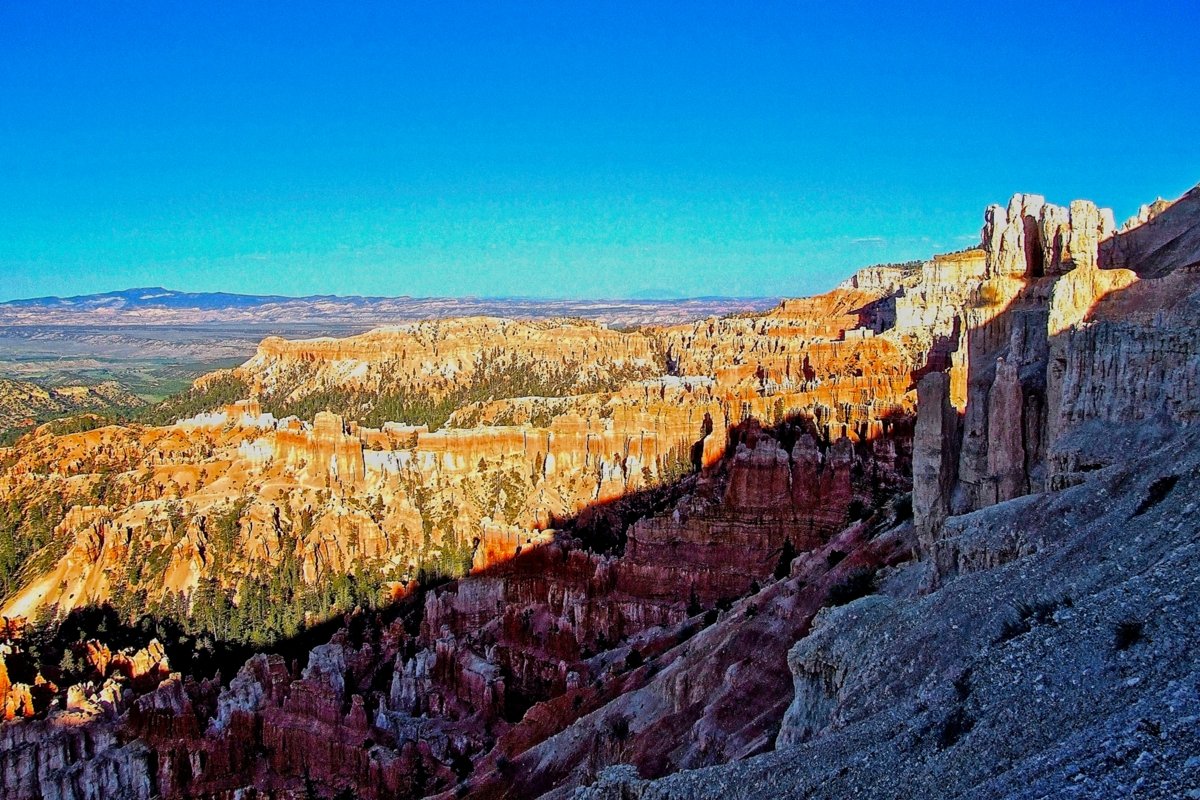
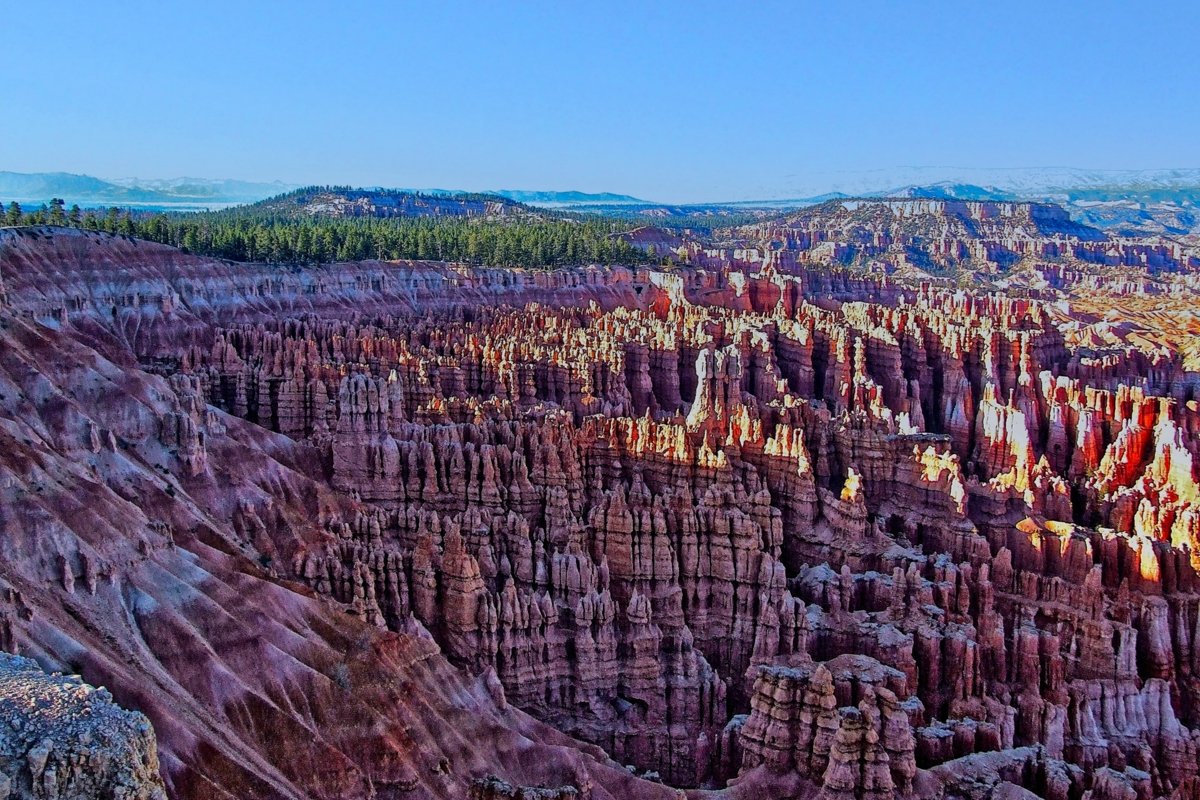
The natural amphitheatre of Bryce Point
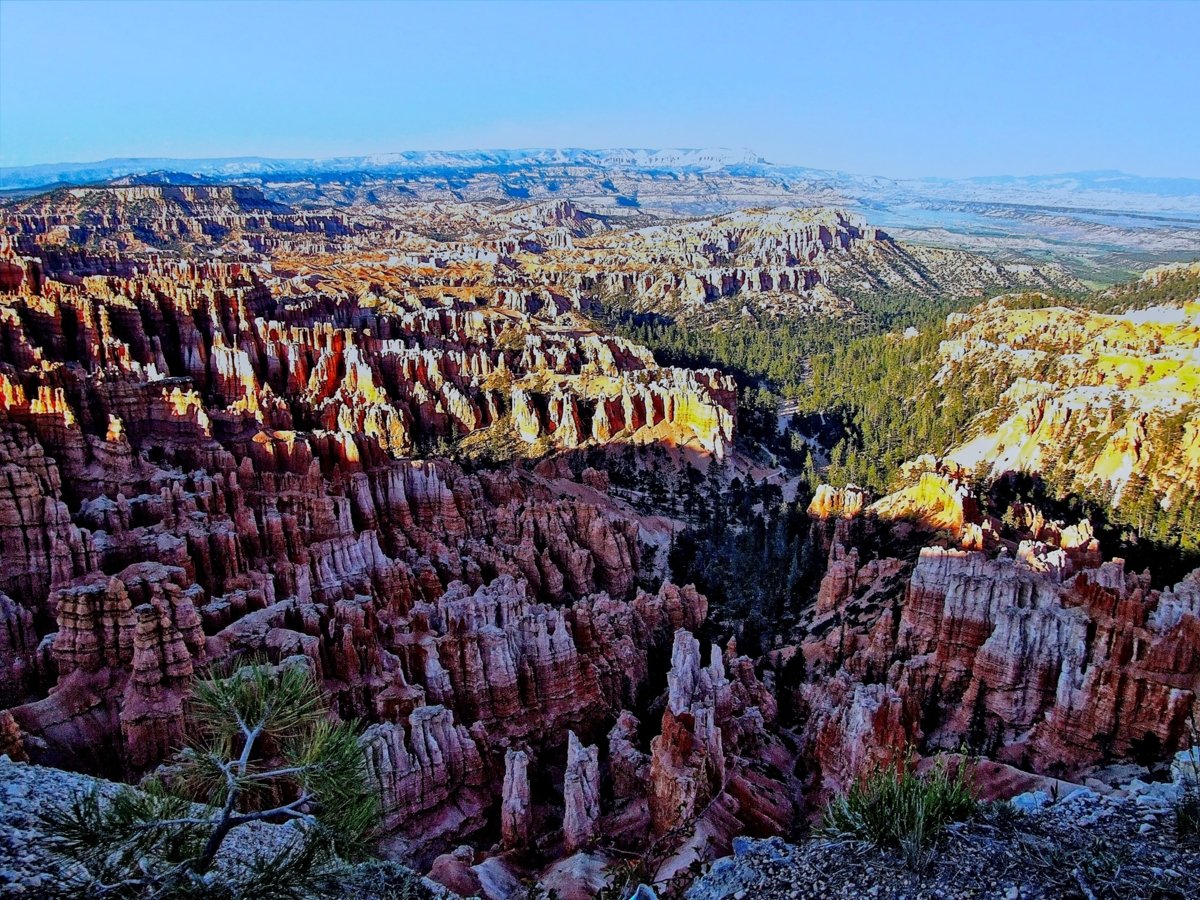

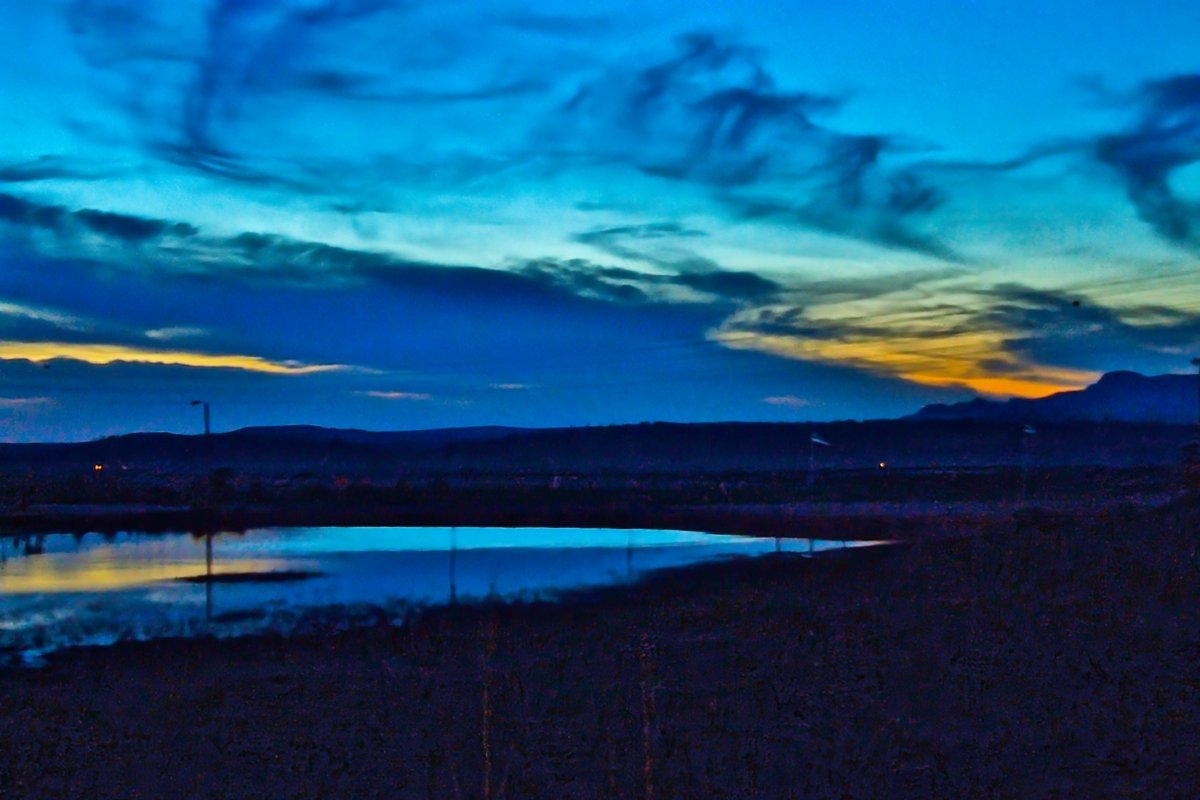
Twilight at our hotel
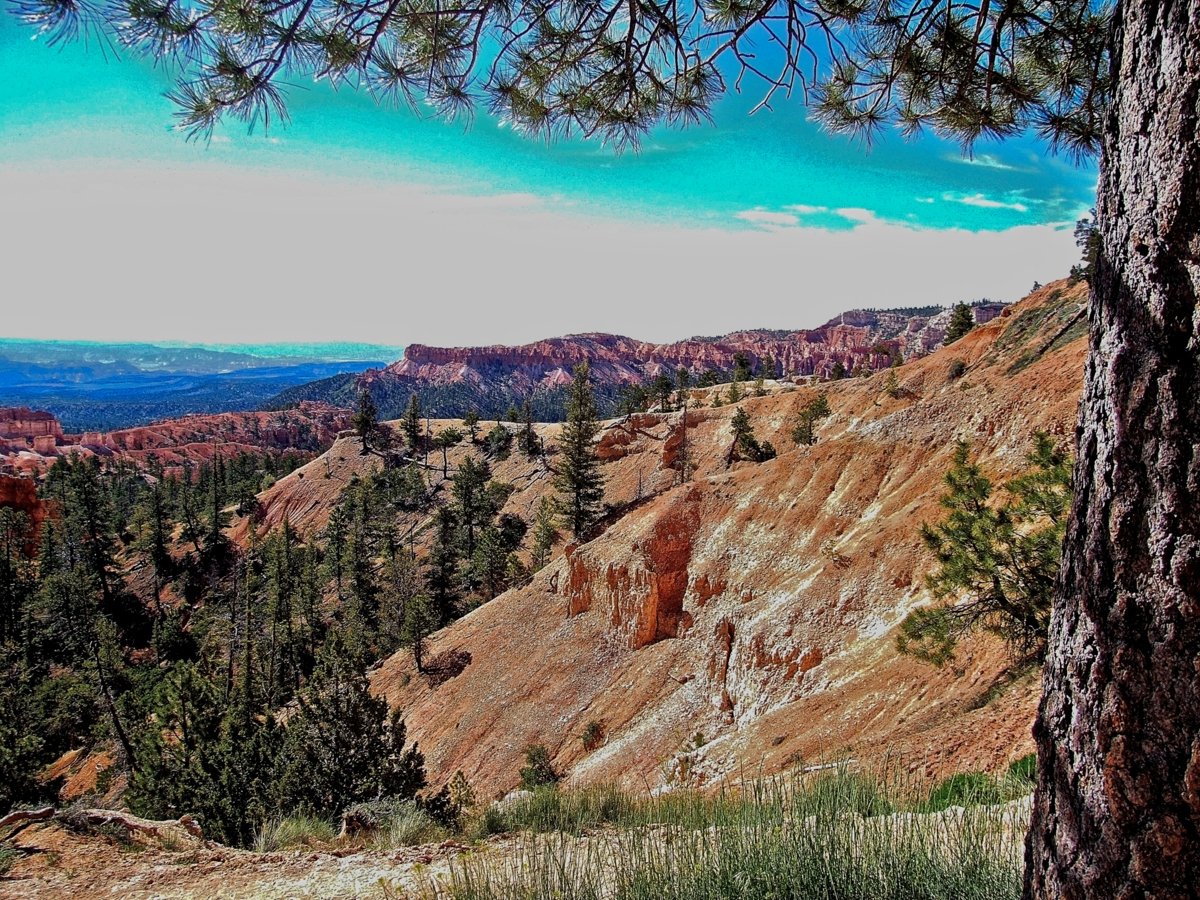
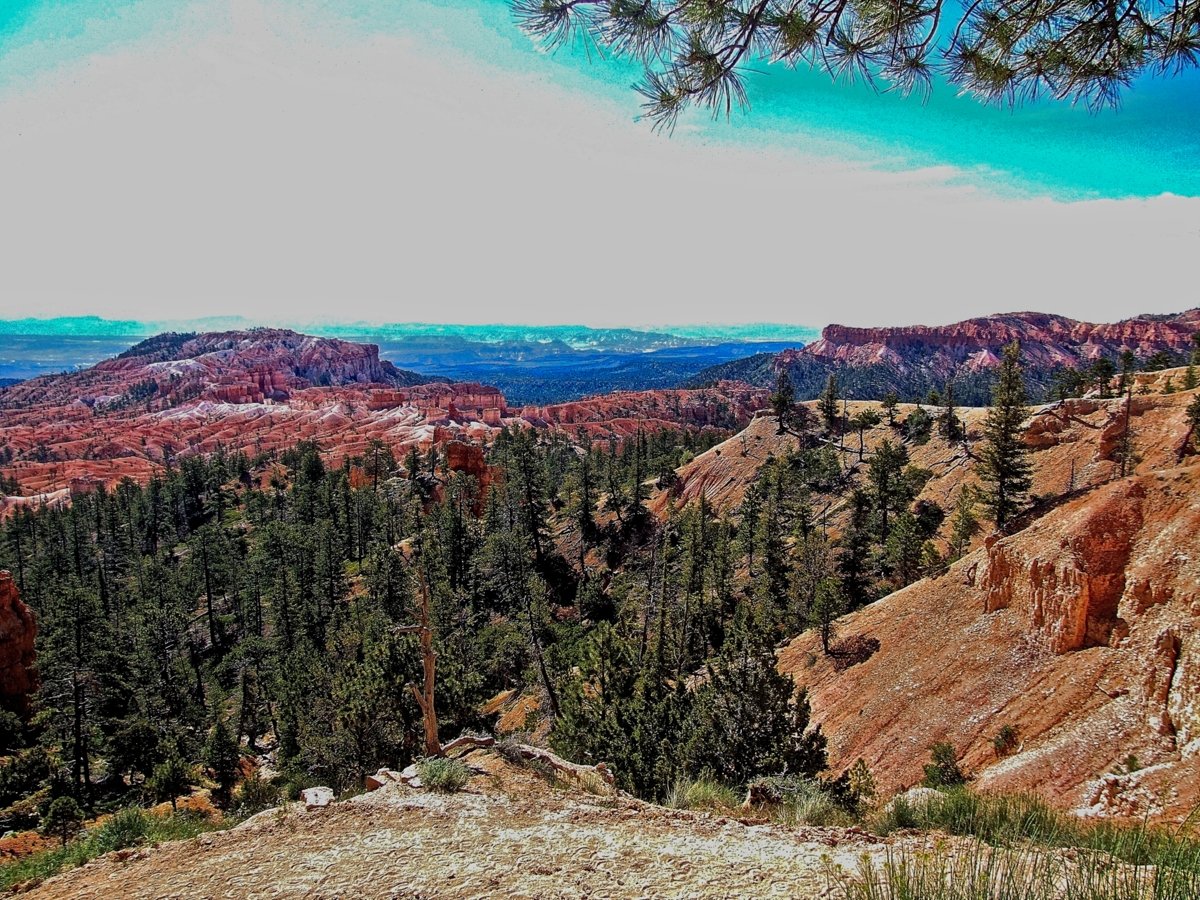
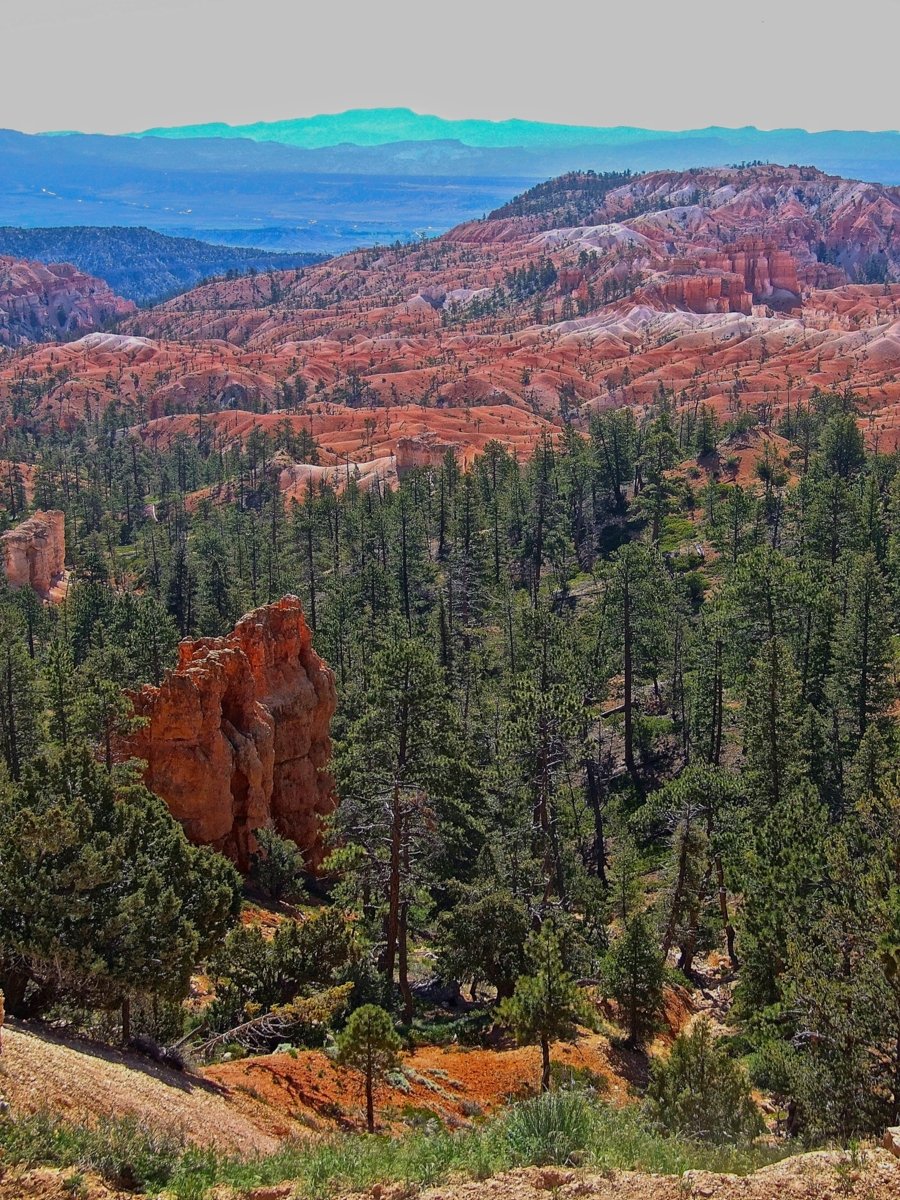
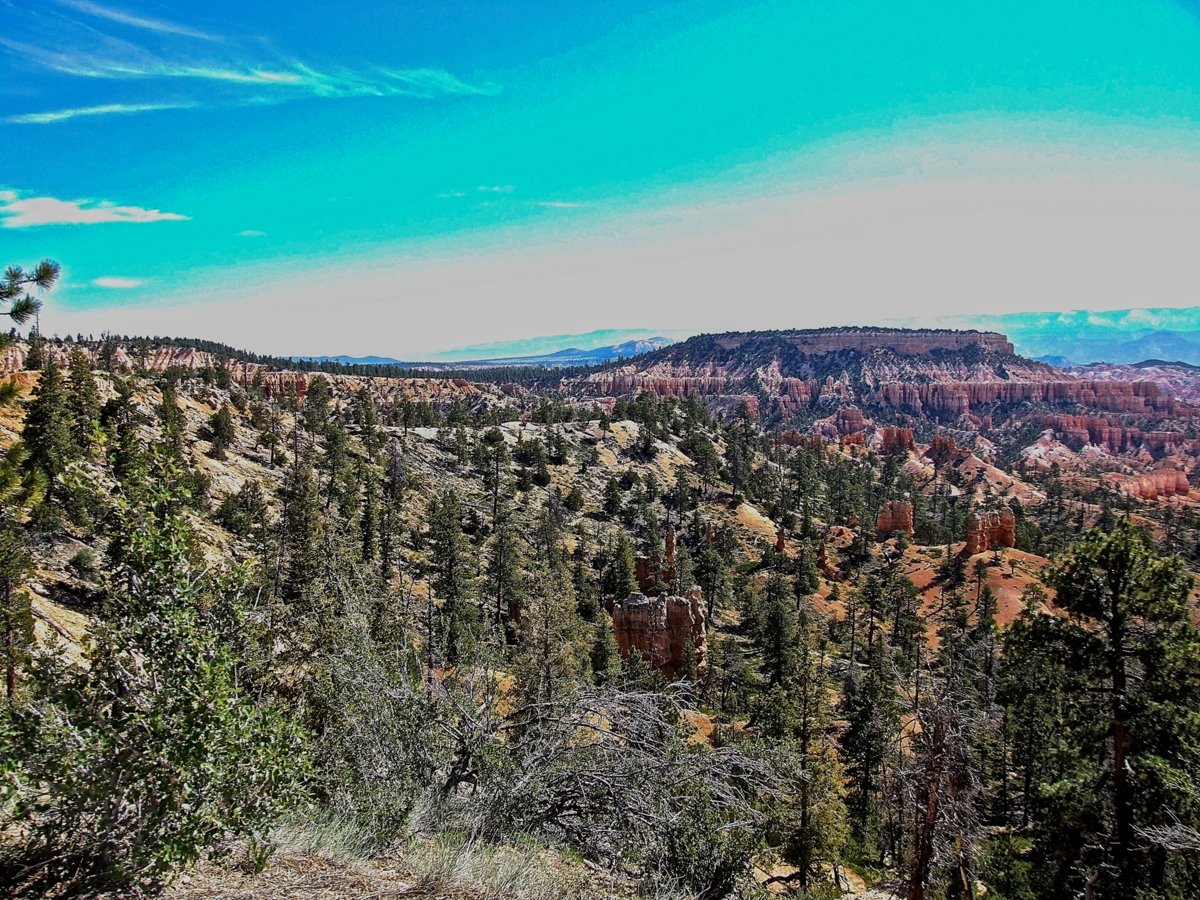
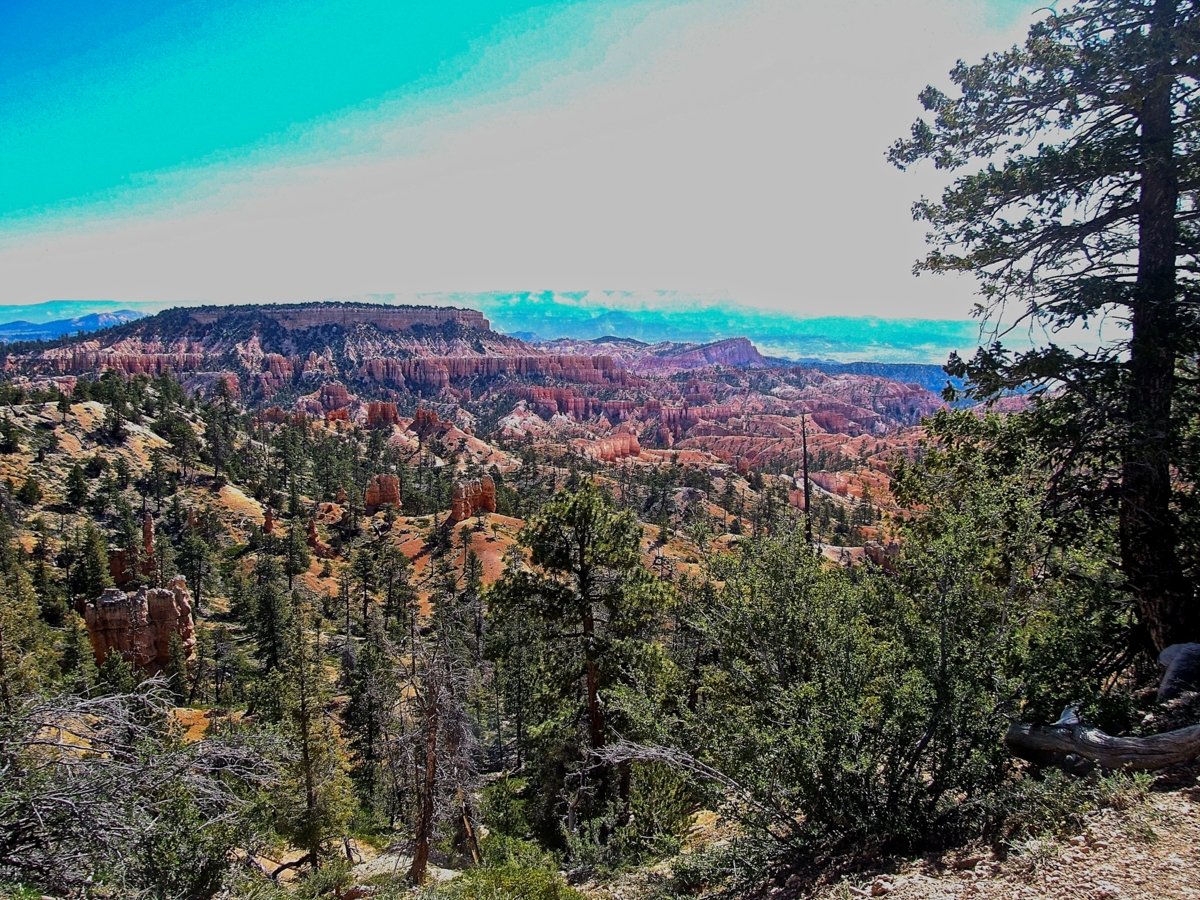
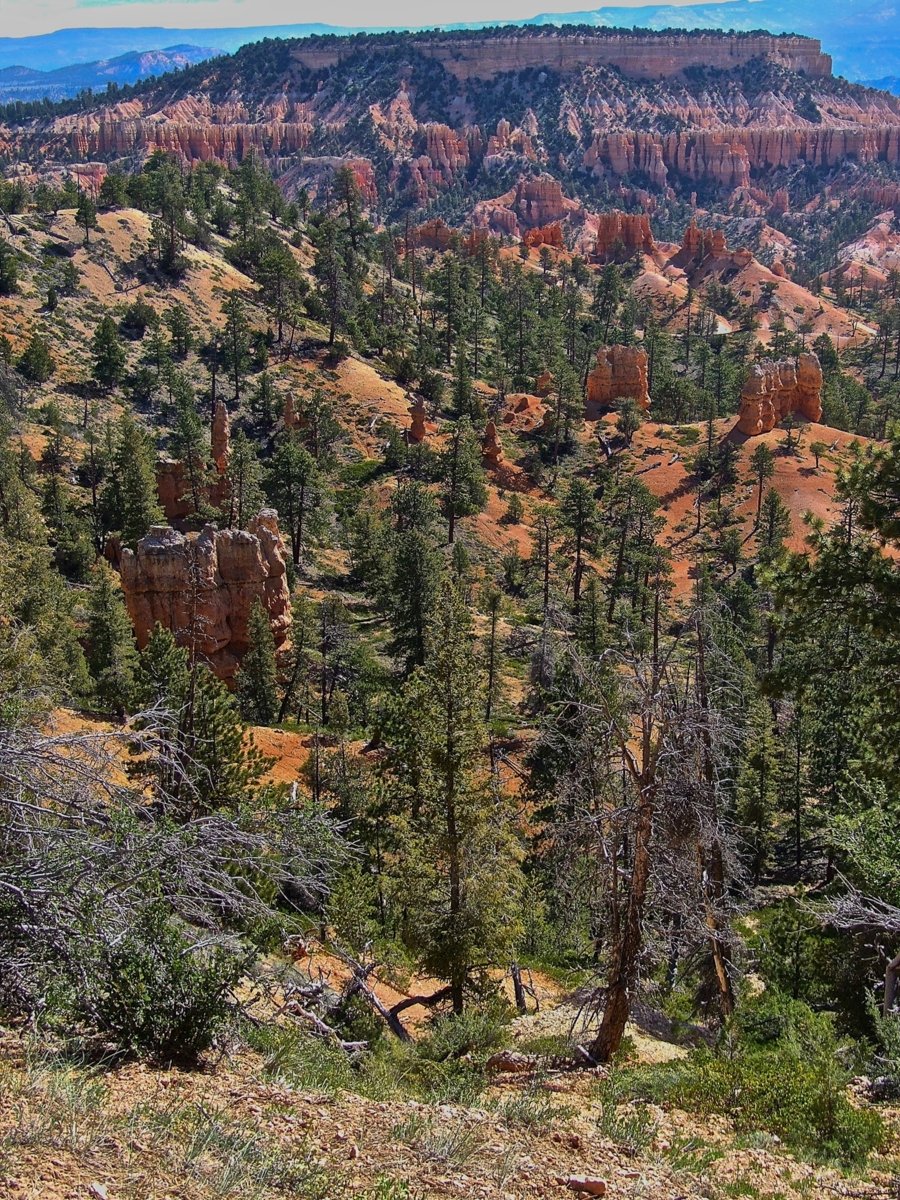
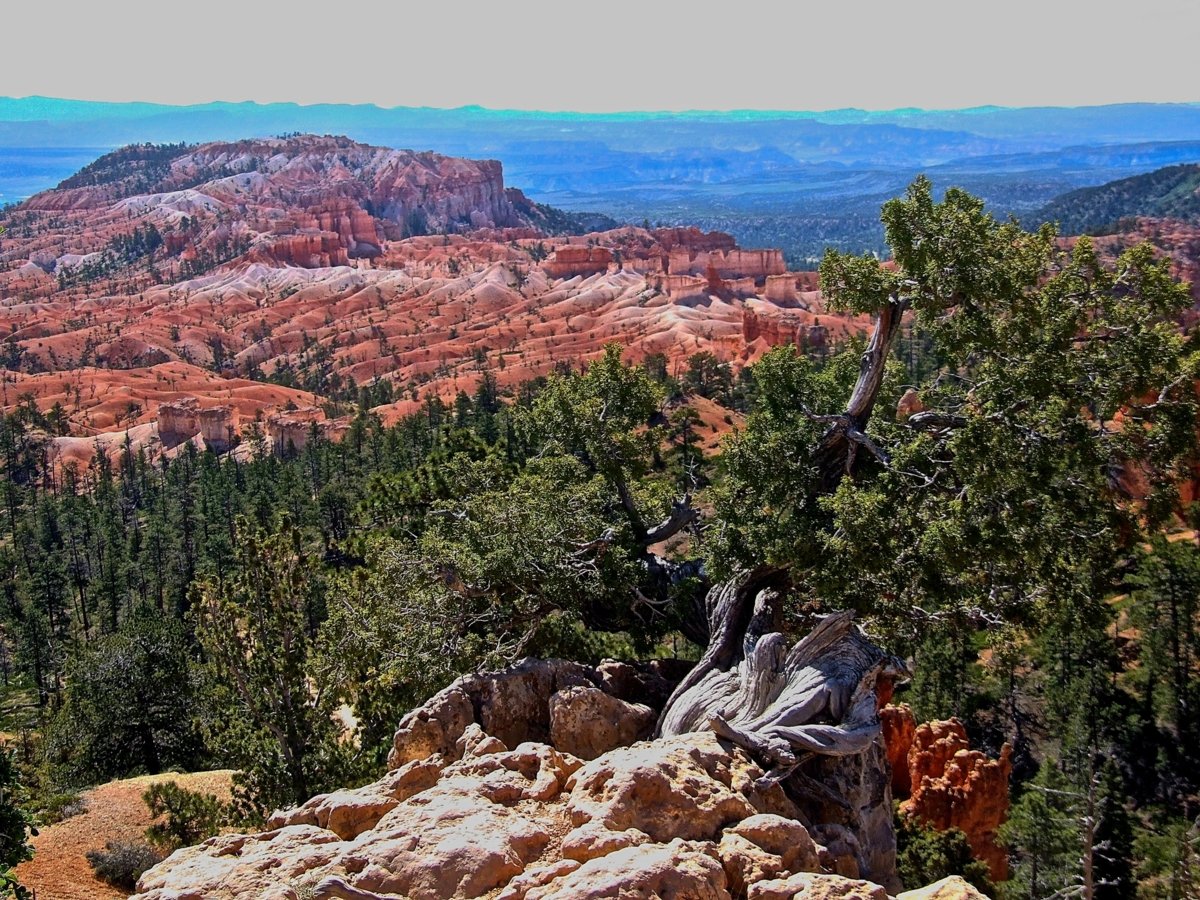

Natural Bridge viewpoint
